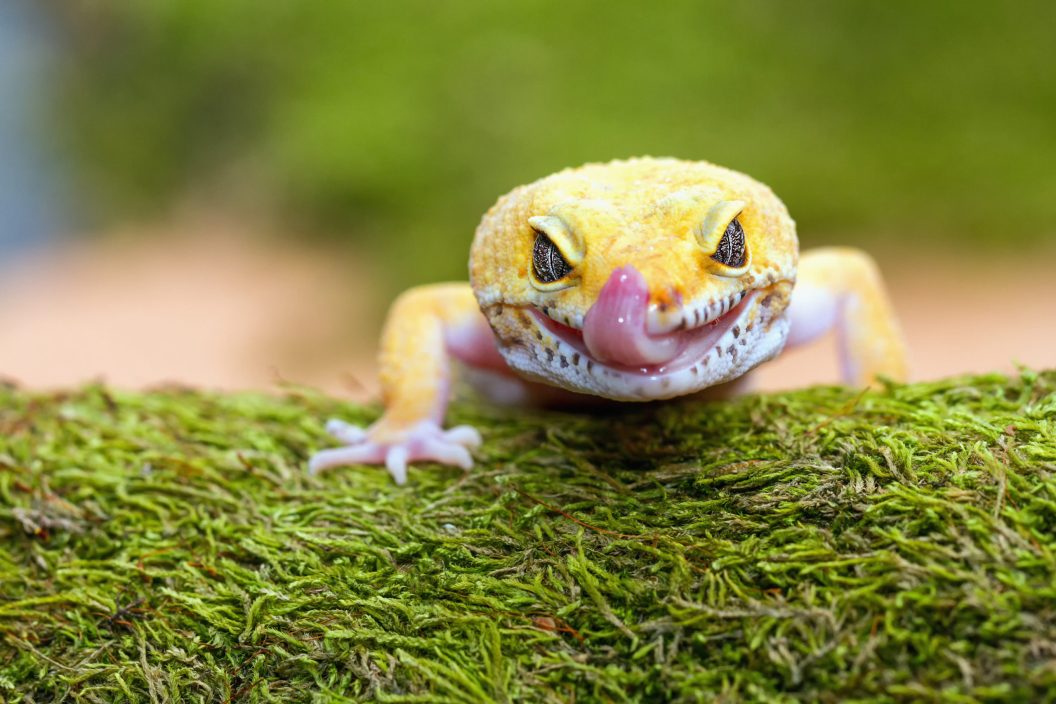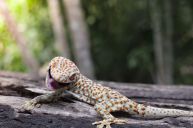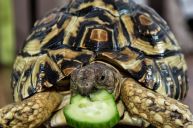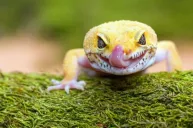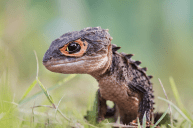These are one of the easiest lizards to care for and one of the most gentle. They are also one of the only lizards that have movable eyelids. "Leos" are nocturnal insectivores and get their name from the spots they develop as adults. As hatchlings, they have bands of color across their body that gradually fade as they mature. These lizards don't have sticky lamellae on their feet, but instead have tiny claws at the end of each toe, making them ground dwellers.
What are morphs?
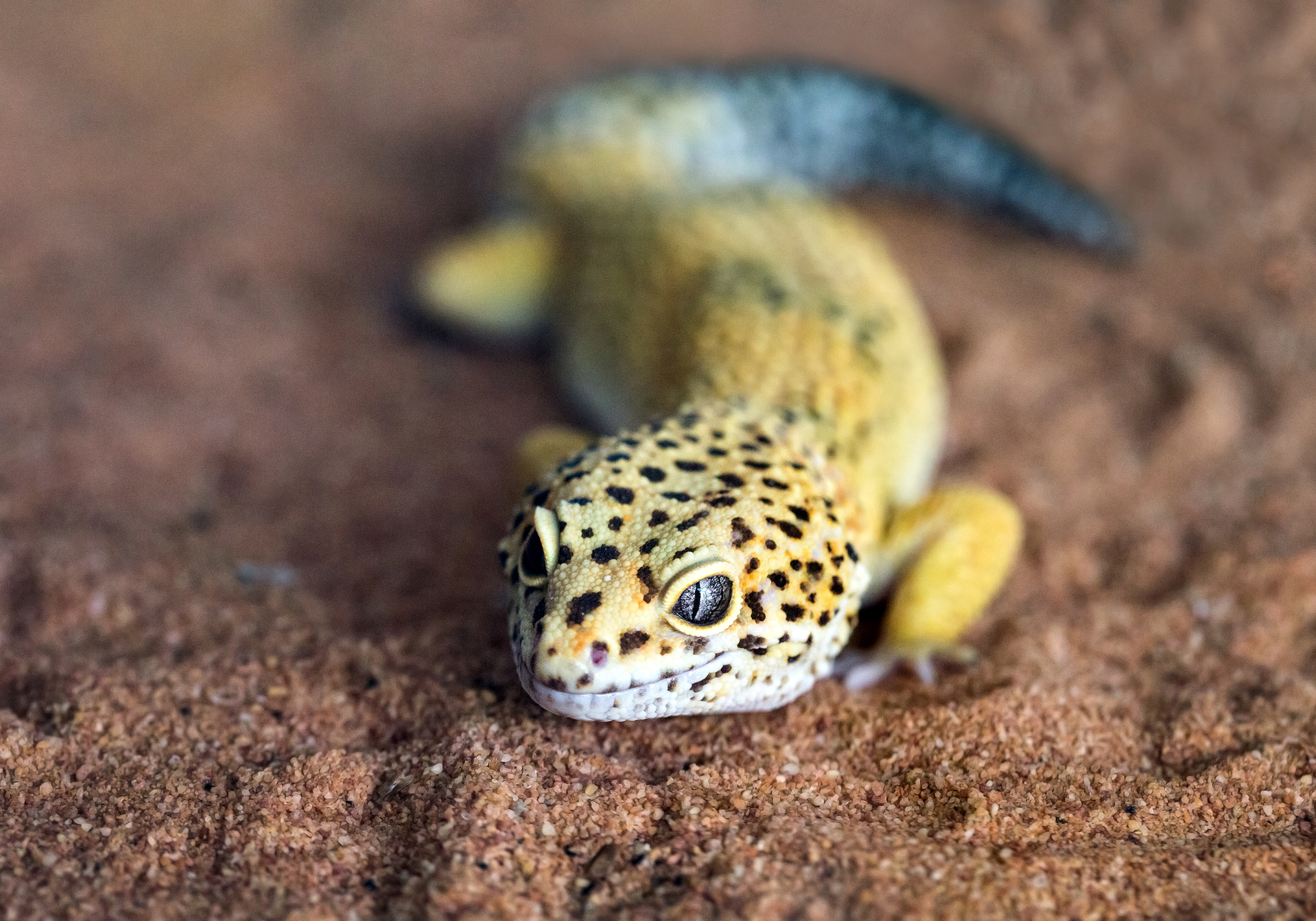
Reptile Advisor tells us that morphs are a variation in size, coloring, pattern or other physical features of a leopard gecko.
"Some morphs are caused by random mutations. Through selective breeding, though, a large (and growing) number of new leopard gecko morphs have been created."
There are many types of Leopard gecko morphs. Breeders continue to develop new variations on leopard gecko characteristics, the list of morphs and morph combinations is ever-expanding.
Here are just a few morph categories:
- Normal & High Yellows
- Albino Morphs
- Striped Morphs
- Hypo/Hyper Melanistic Morphs
- Blizzard Morphs
- Patternless Morphs
How do you take care of a Leopard Gecko?
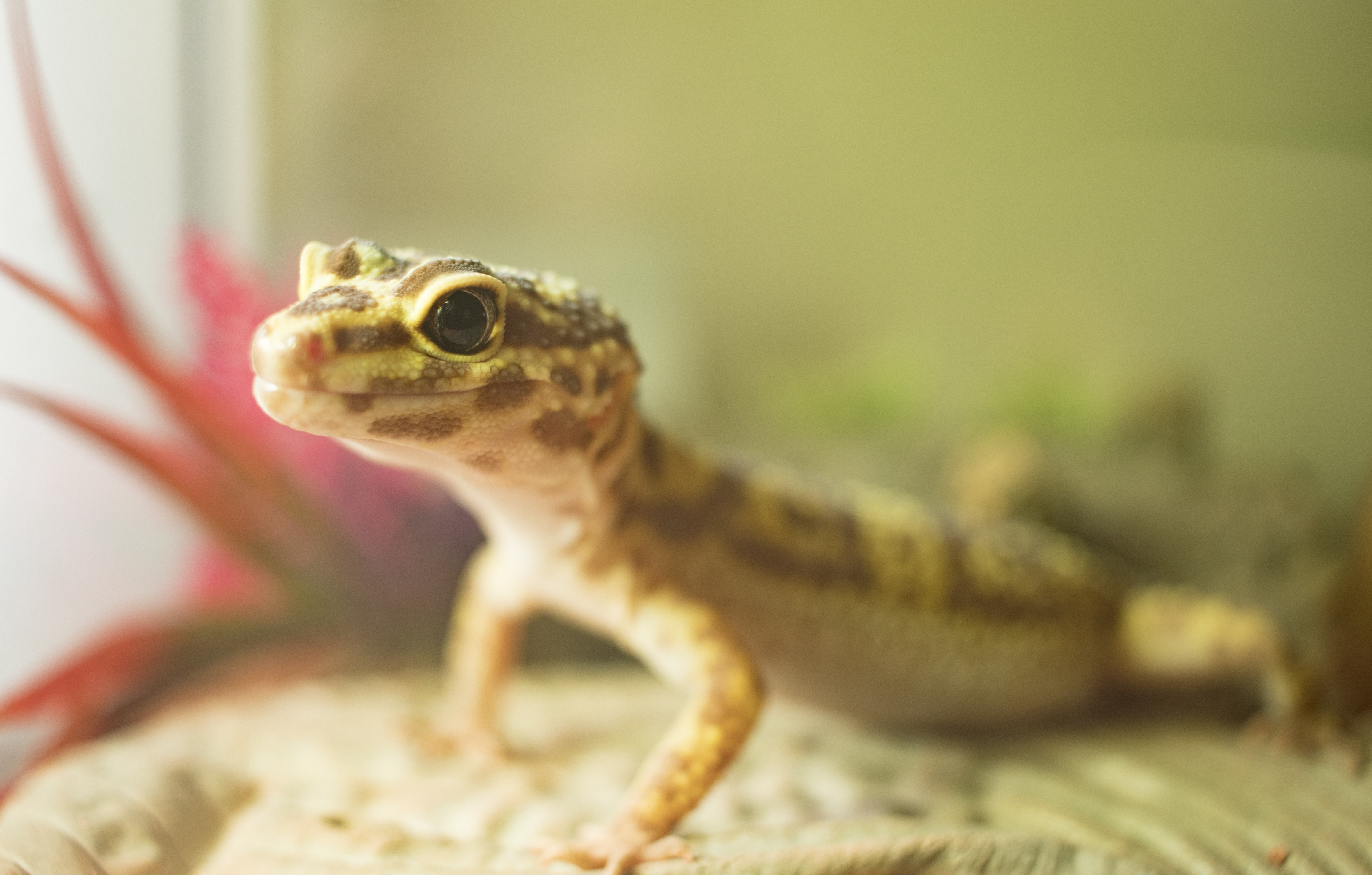
Leopard geckos are one of the most popular lizard pets! They are hardy, easy to maintain, require little space, and have long life spans which make them a perfect companion for families.
The Bearded Dragon shares that they can live to be 20 years old or older if their owner takes care of them properly by making sure they have proper nutrition, habitat, and monitor for health issues.
Fun facts: When agitated they can bark and Leopard geckos tails are used as an emergency fat and water supply.
What about housing? Can Leopard Geckos swim?
https://www.instagram.com/p/B4DnUlqHWhC/
They require a 10-20 gallon aquarium or similar cage is usually sufficient for 1-2 individuals. Leopard geckos don't like water and can become stressed if you put them in deep water, and they can drown as well.
Other fun facts about the Leopard gecko?
The Leopard gecko care sheet above isn't complete without these fun tidbits! These are reminders if you bring home this popular pet!
- They require a 10-20 gallon tank or terrarium.
- The best heat source is either a heat lamp or ceramic heat emitter placed above the enclosure. Under-tank heaters and hot rocks are not as safe or effective. Stick to these rather than a 'heating pad' or heat bulb.
- Provide a shallow water dish for drinking and soaking.
- A common medical disorder is calcium deficiency ("metabolic bone disease").
- They enjoy mealworms, super worms, phoenix worms, flies, roaches, etc., can eat an occasional pinkie mouse.
- A shy, nocturnal species that requires a hide box. This shelter should be designed so the gecko can be easily removed from its hiding place, if necessary.
- UVB lighting is recommended - 5.0% UVB or greater for 12 hours a day. The cage should be dark at night. Although leopard geckos are nocturnal, direct and indirect exposure to UVB radiation will benefit overall health.
- Geckos normally eat their shed skin. Gross!
- You will love the variety of colors available when you start researching them!
Pet stores can help be a resource and the staff can always answer questions.
Do you live with a Leopard Gecko? What essentials did we miss? Please leave us a comment below!
WATCH NOW: Bearded Dragons Are Awesome Reptiles!
